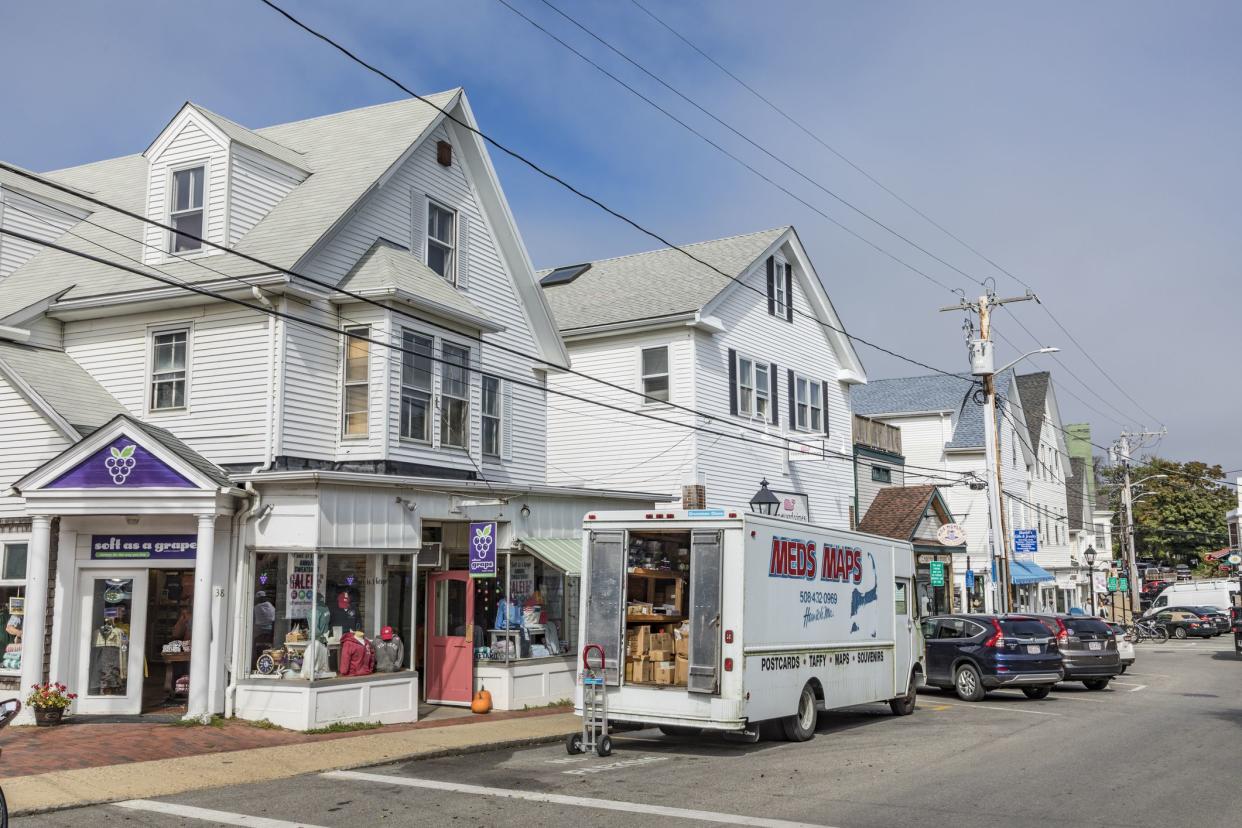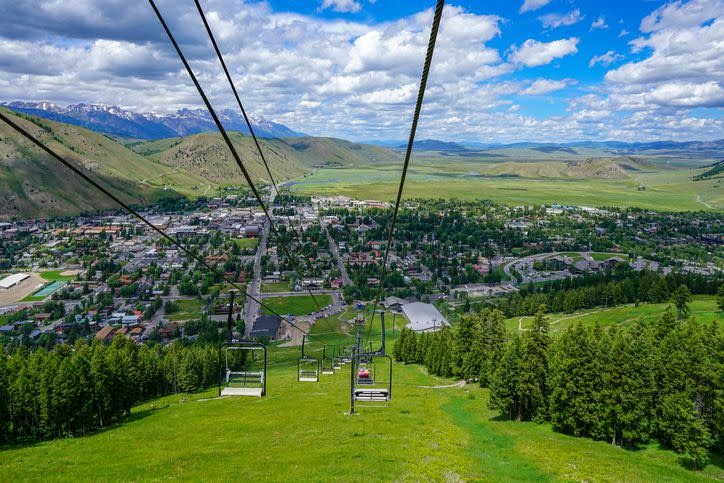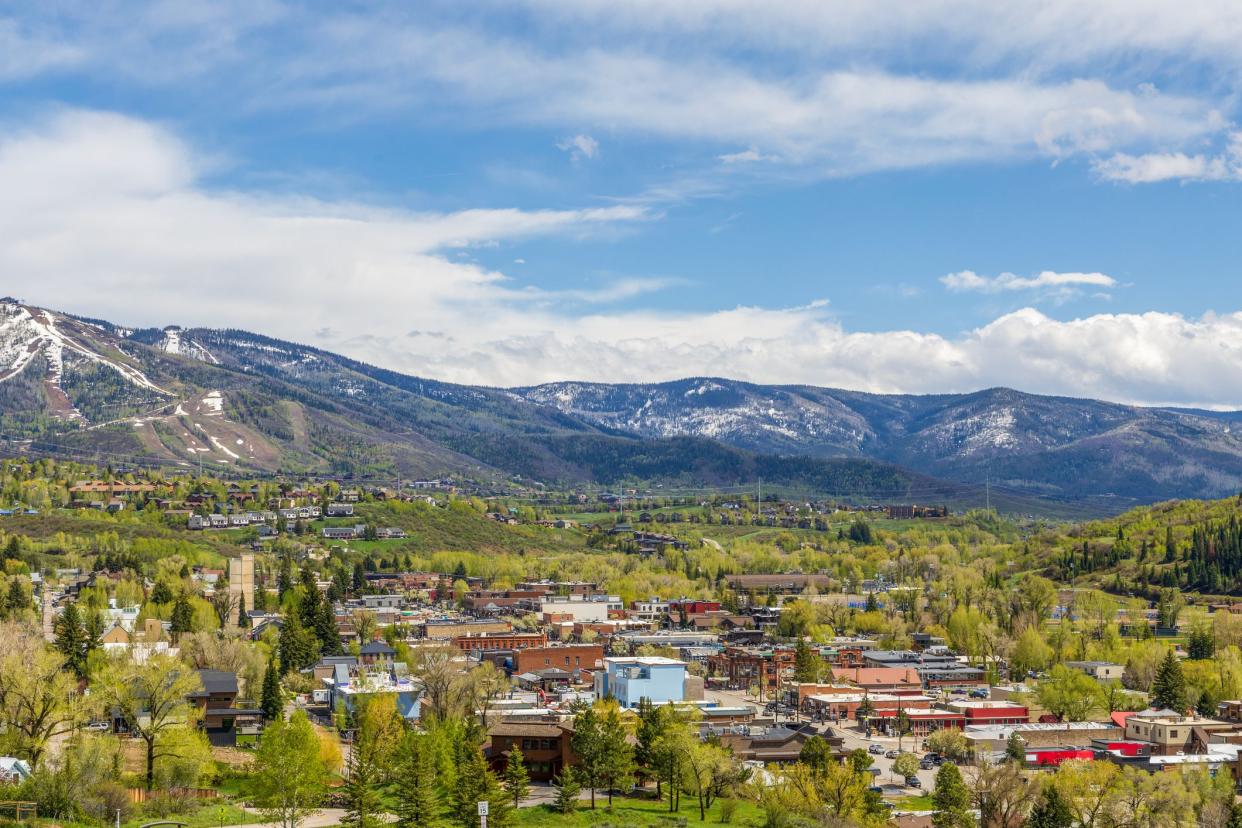US Towns Whose Price Tags Rival America's Largest Metros

Home Values in America’s Most Expensive Towns Rival Those in Nation’s Largest Metros
The town-and-country lifestyle is often depicted as simple, idyllic and inexpensive compared to big-city living — especially regarding housing costs. But is this accurate?
To look at how costly buying a house in a town can get, LendingTree analyzed U.S. Census Bureau American Community Survey data to find the 50 U.S. micropolitan areas — which we refer to in this study as “towns” — with populations between 10,000 and 50,000 with the most expensive median home values.
Many towns across the country are chock-full of expensive real estate, with home values that rival — and, in some cases, exceed — those found in the nation’s 50 largest metropolitan areas.
Key findings
Vineyard Haven, Mass., Jackson, Wyo., and Breckenridge, Colo., are the towns with the most expensive real estate in the U.S. The median home values in these towns are $998,100, $847,300 and $760,000, respectively. This means a median-value home in Vineyard Haven is in the same ballpark as one in San Francisco ($1,073,300), and those in Jackson and Breckenridge are worth about as much as those in Los Angeles ($772,000).
While the towns featured in this study are the 50 most expensive in the country, not all of them are staggeringly high-cost. For example, median home values in Evanston, Wyo., Cambridge, Md., and Brookings, S.D., are $224,800, $226,000 and $227,800, respectively. That’s far less than what you’d find in Vineyard Haven or Jackson but higher than median home values in 286 other micropolitan areas with populations between 10,000 and 50,000.
At $93,225, $102,435 and $100,611, median household incomes are higher in Vineyard Haven, Jackson and Breckenridge than in most other areas — but not high enough to offset high home values. In Vineyard Haven, the median value of a home is 10.71 times higher than the median household income for the area. In Jackson and Breckenridge, it’s 8.27 and 7.55 times higher. Because home values in these areas are much higher than incomes, many full-time residents in these towns will have to stretch their budgets beyond their breaking points to buy a home.
For comparison among the towns featured, homes are the least expensive relative to income in Evanston, Williston, N.D., and Rock Springs, Wyo. The median home value in these areas is an average of only 2.95 times higher than the median area household income, which implies homes in each town are relatively affordable.

Towns where home values are highest
No. 1: Vineyard Haven, Mass.
Total population: 20,543
Median home value: $998,100
Median household income: $93,225
Home value-to-income ratio: 10.71
Metro with comparable median home value: San Francisco
Median home value (comparable metro): $1,073,300
Median household income (comparable metro): $129,315
Home value-to-income ratio (comparable metro): 8.30

No. 2: Jackson, Wyo.
Total population: 35,159
Median home value: $847,300
Median household income: $102,435
Home value-to-income ratio: 8.27
Metro with comparable median home value: Los Angeles
Median home value (comparable metro): $772,000
Median household income (comparable metro): $89,105
Home value-to-income ratio (comparable metro): 8.66

No. 3: Breckenridge, Colo.
Total population: 30,955
Median home value: $760,000
Median household income: $100,611
Home value-to-income ratio: 7.55
Metro with comparable median home value: Los Angeles
Median home value (comparable metro): $772,000
Median household income (comparable metro): $89,105
Home value-to-income ratio (comparable metro): 8.66
You can check Full rankings here.

Why are homes in some towns so expensive?
There are many towns where home values are as expensive as — if not more costly than — those in the country’s largest metros. The most expensive towns are often popular vacation spots for affluent individuals who might not make their money locally and can afford to spend significant sums on homes. These buyers can snap up a town’s limited housing supply and drive up home prices, making housing difficult to afford for locals who aren’t high-income earners.
Home prices can still be expensive in areas that aren’t prominent vacation spots due to a lack of housing supply. Rural areas often see a significant lack of housing development because construction is prohibitively costly and usually considered not profitable enough to be worthwhile for builders. This means buyers in many towns have to compete for a relatively small number of homes, which puts upward pressure on prices.
This isn’t to say that real estate in all towns is prohibitively expensive. Some towns are very affordable. There may be instances where a would-be buyer would have an easier time buying a house in a town than in a city.

3 tips for town homebuyers
Though towns can be expensive, there are still ways for homebuyers to make housing more affordable. Here are three tips:
Shop around for a mortgage before buying. Shopping around for a mortgage can help you find your best possible mortgage rate, which can lower your monthly payment and save you a significant amount of money over the lifetime of your loan. With a lower rate, a home that once seemed too expensive could become more affordable.
Work on your credit score. Though you don’t need a perfect credit score to get approved for a mortgage, the higher your score is, the higher your chances of approval. In the same way that shopping around for a mortgage can help you secure a lower mortgage rate and make your loan more affordable, so too can strengthening your credit score before applying for a mortgage.
Consider different loan types. Many loan programs can help make homeownership more achievable, especially for buyers with lower incomes. For example, loans backed by the U.S. Department of Agriculture (USDA) can help buyers in eligible rural areas qualify with relatively low mortgage rates and zero-dollar down payments.

Methodology
The data in this study comes from the U.S. Census Bureau 2022 American Community Survey (with five-year estimates). For this analysis, LendingTree used micropolitan-level data for areas with populations below 50,000 to approximate town-level data.
The home value-to-income ratio was calculated for each town and metro by dividing an area’s median home value by its median household income. The larger the ratio, the more expensive homes are relative to an area’s median income.
This article originally appeared on Lendingtree.com and was syndicated by MediaFeed.org.

